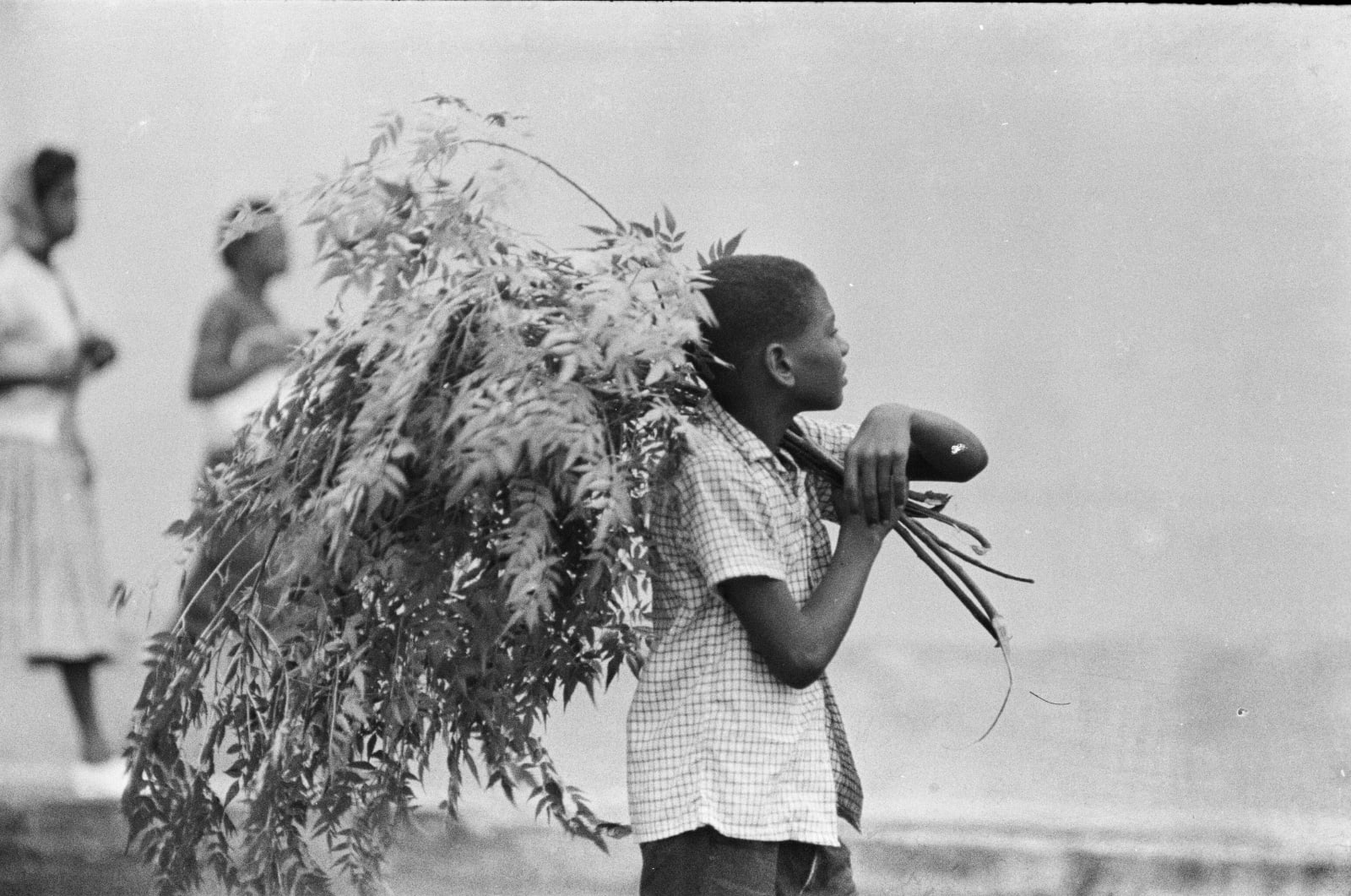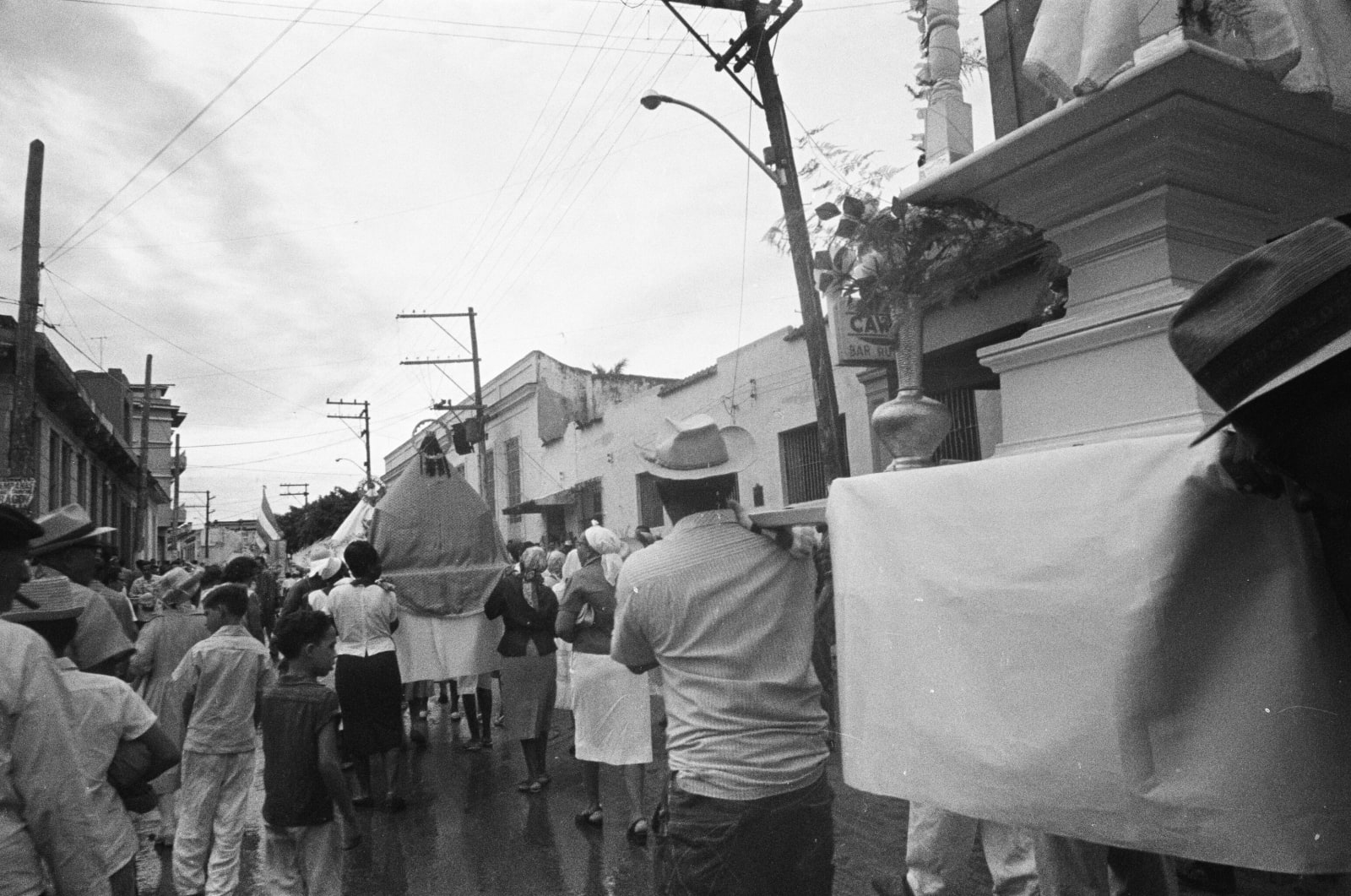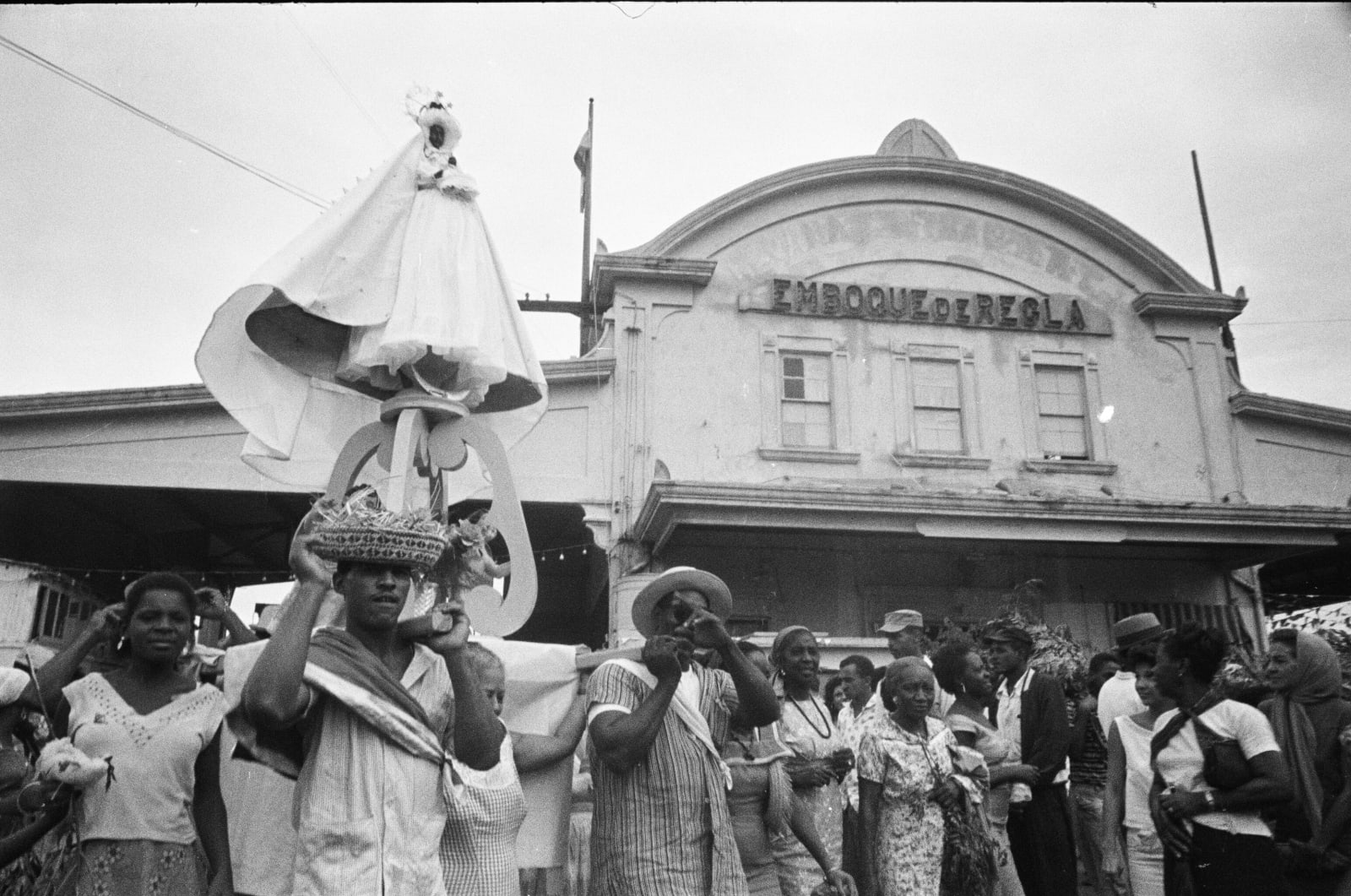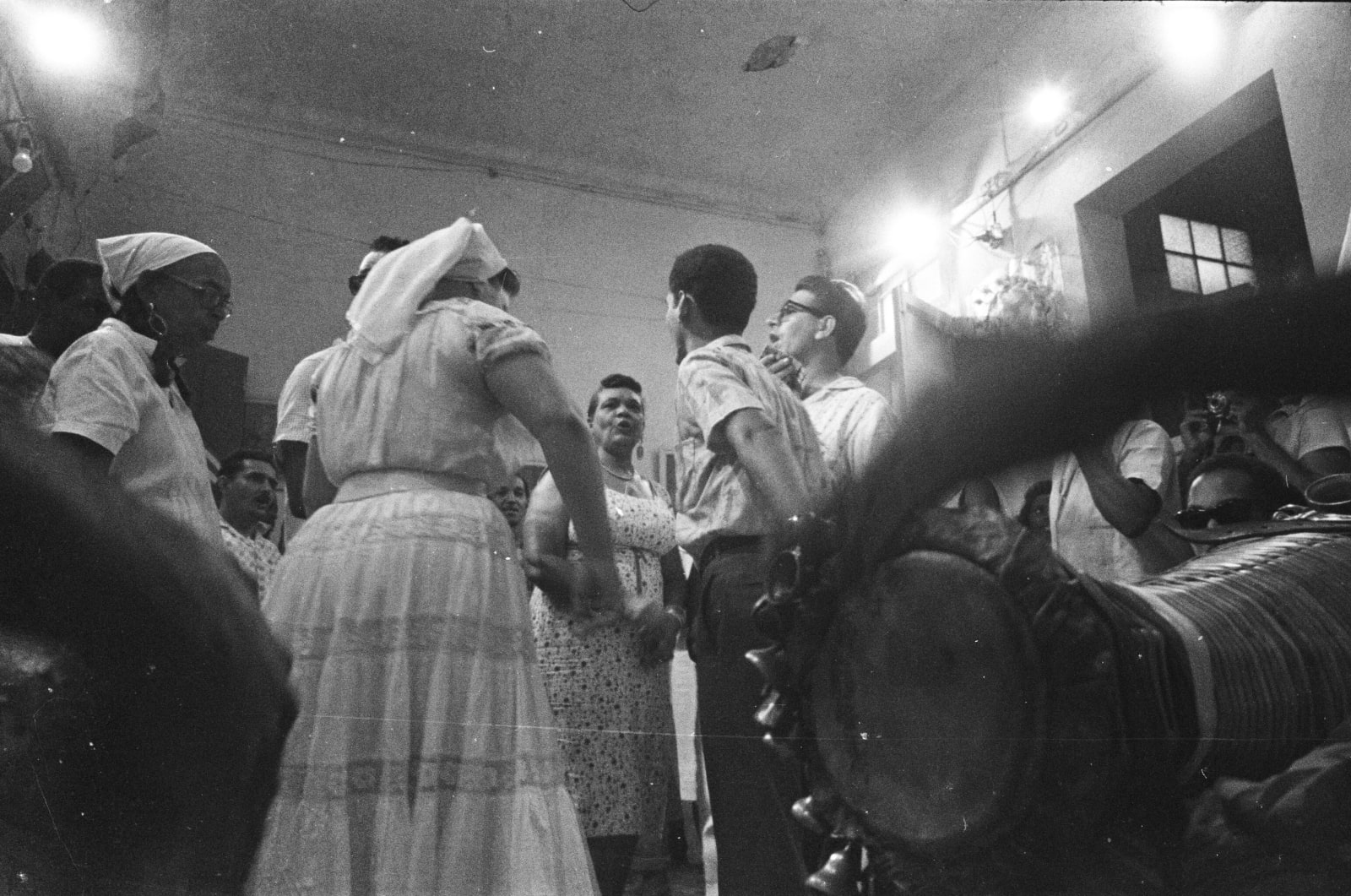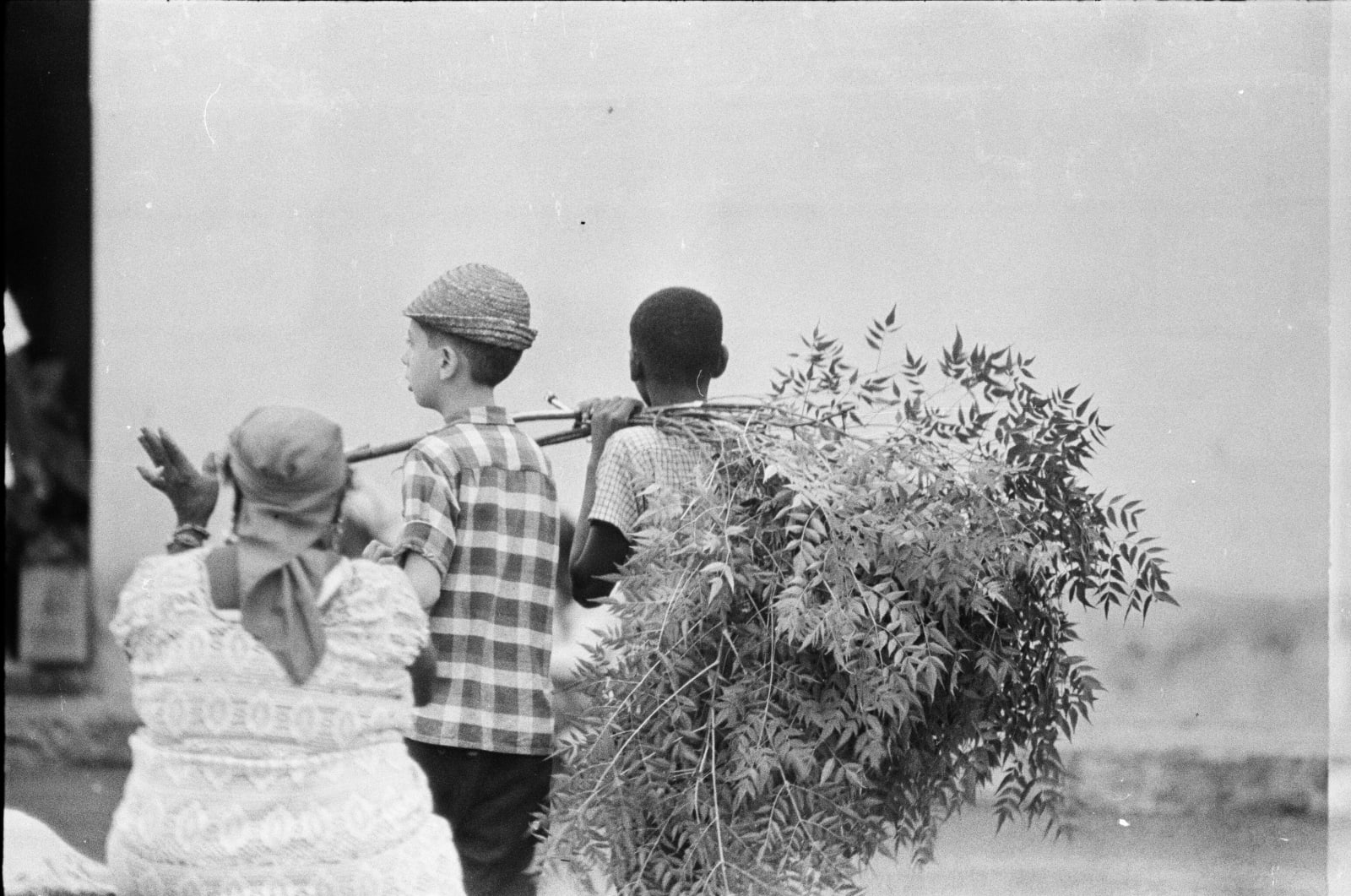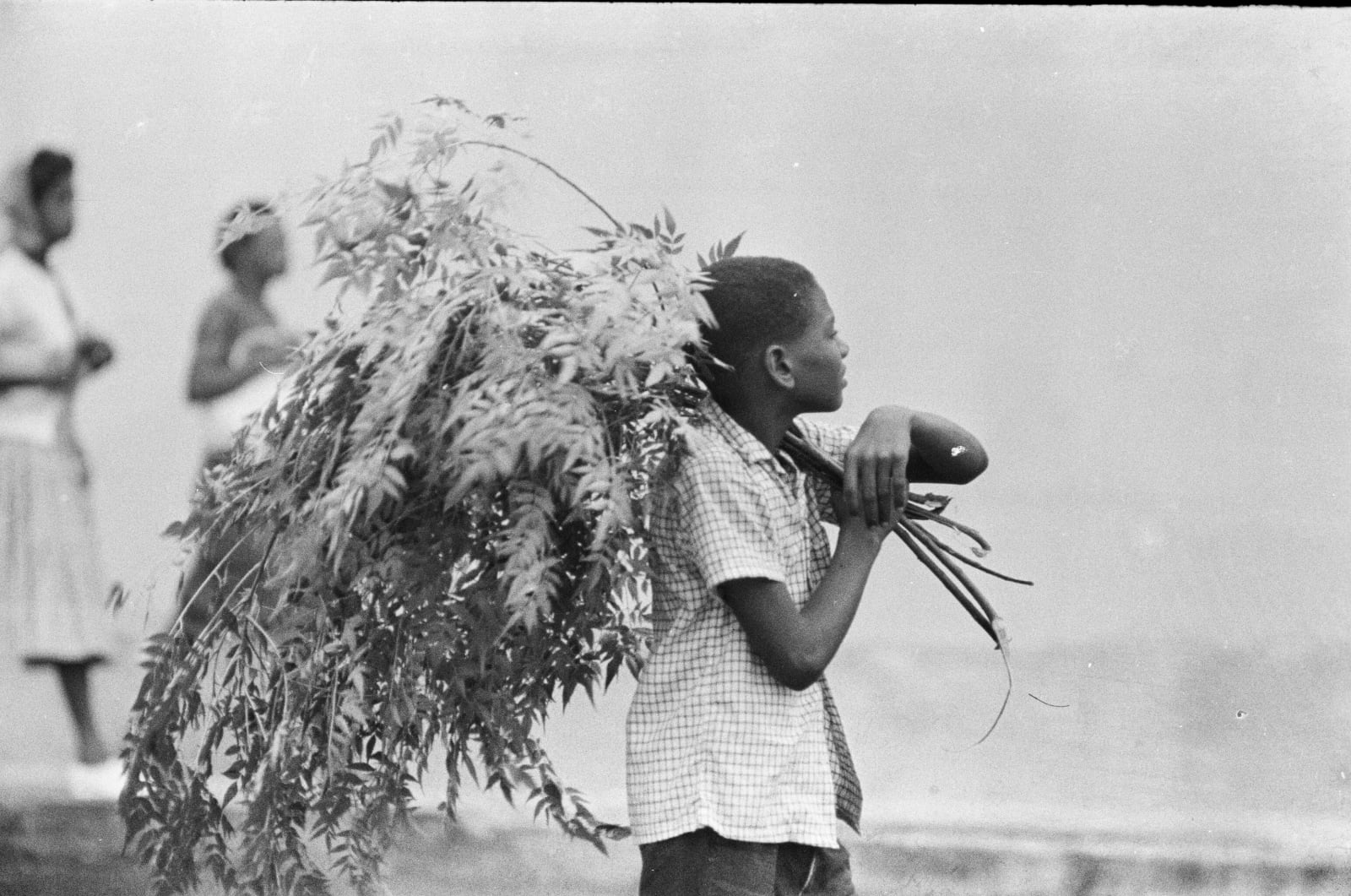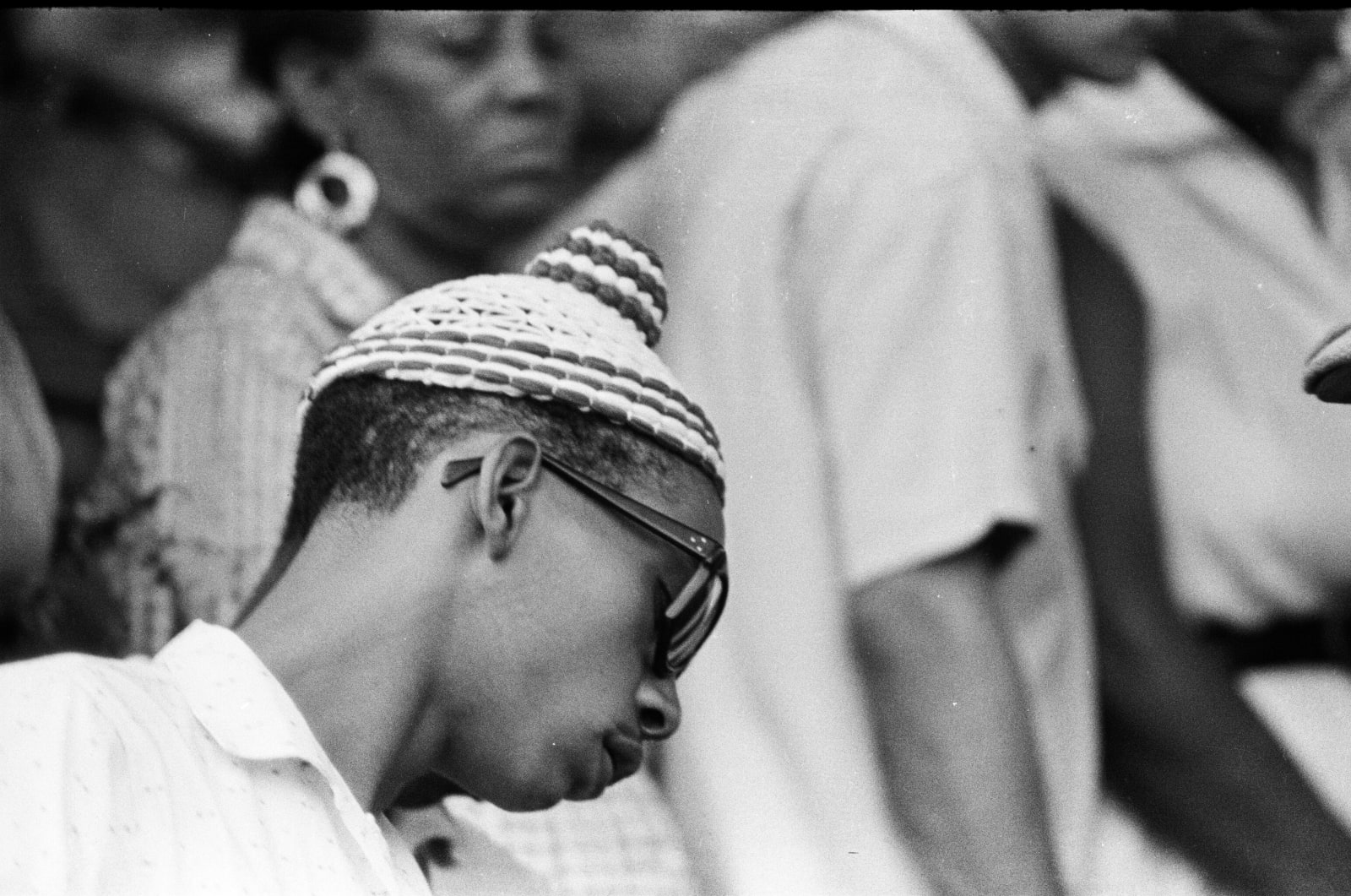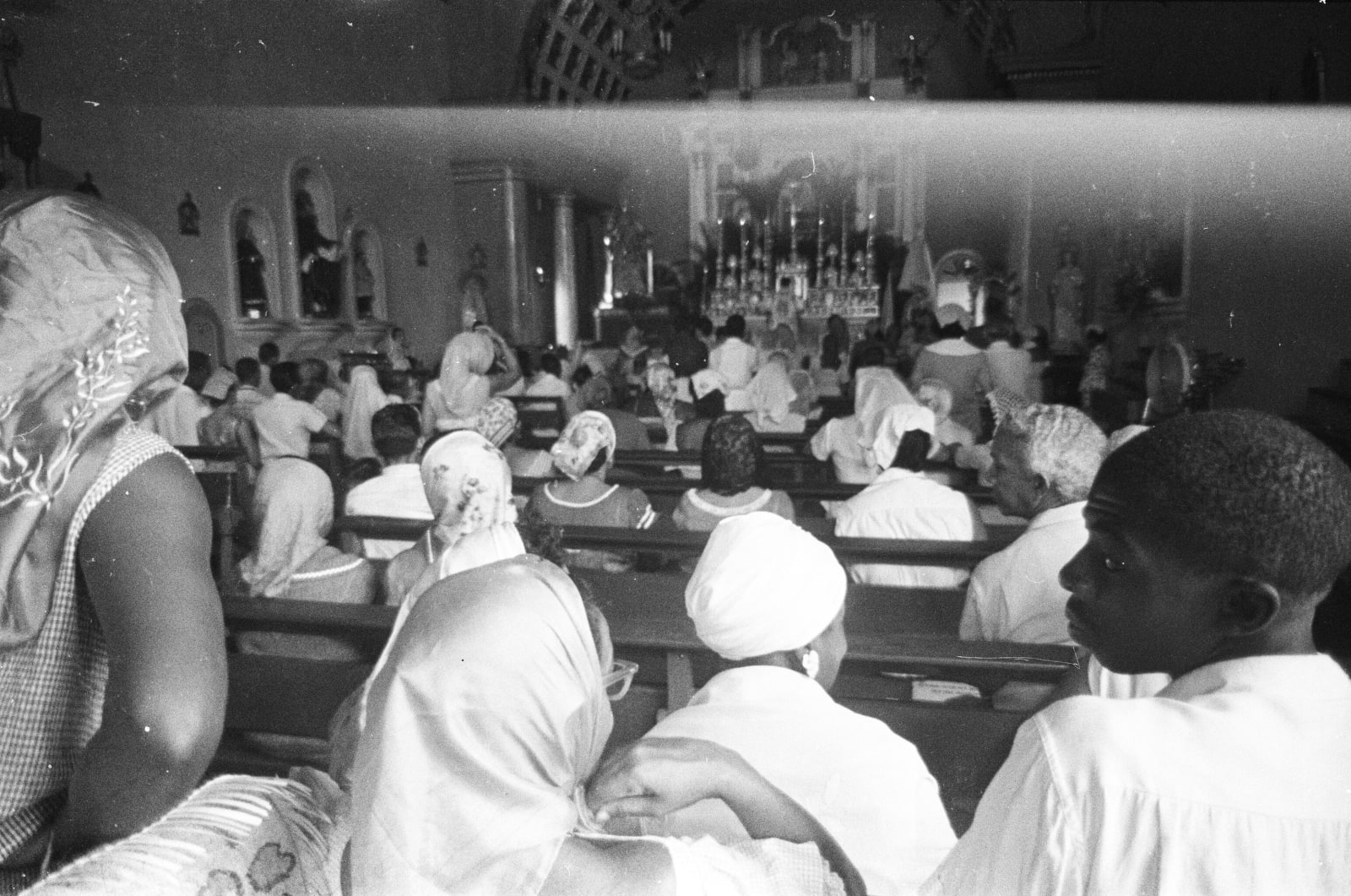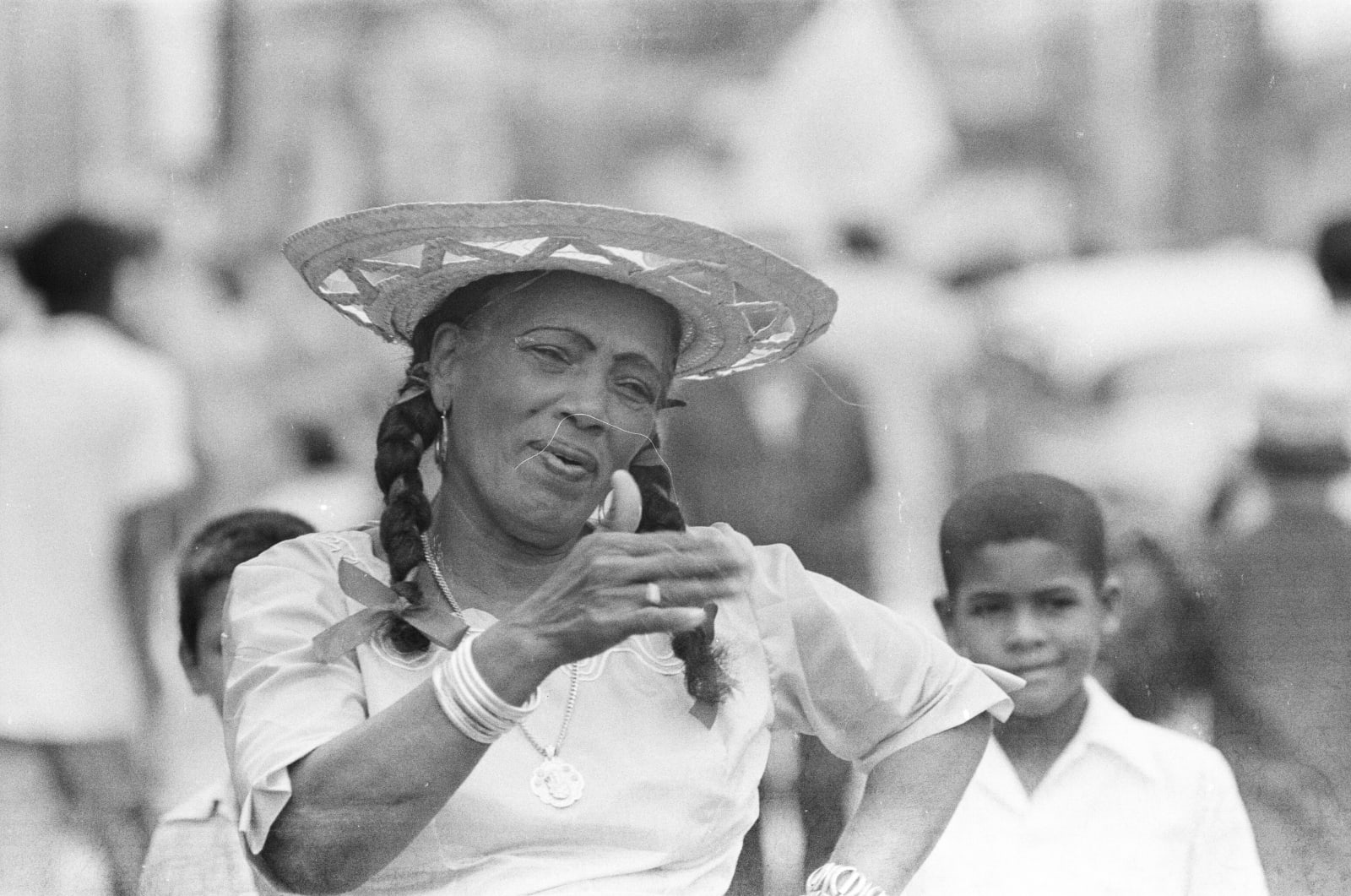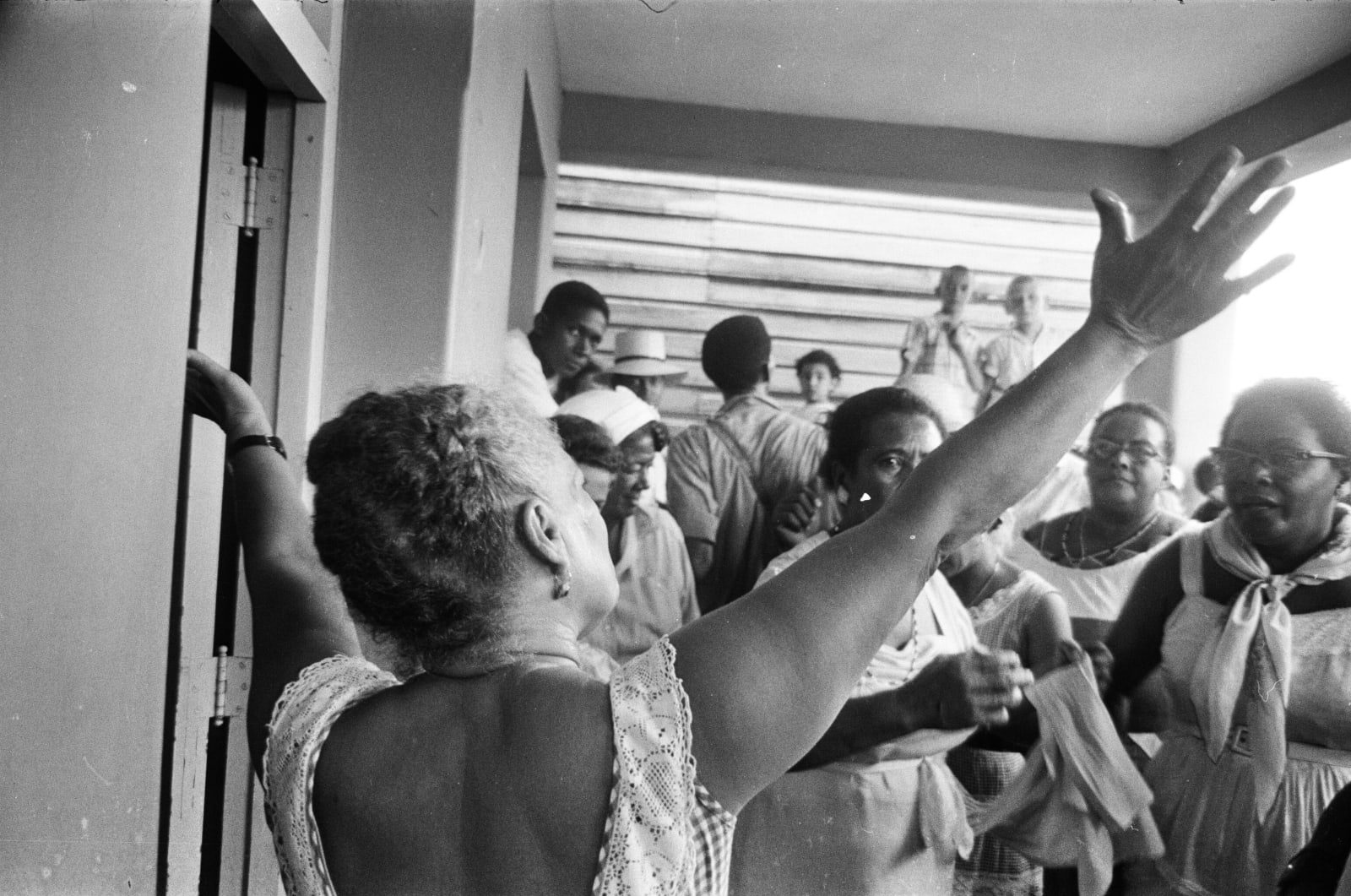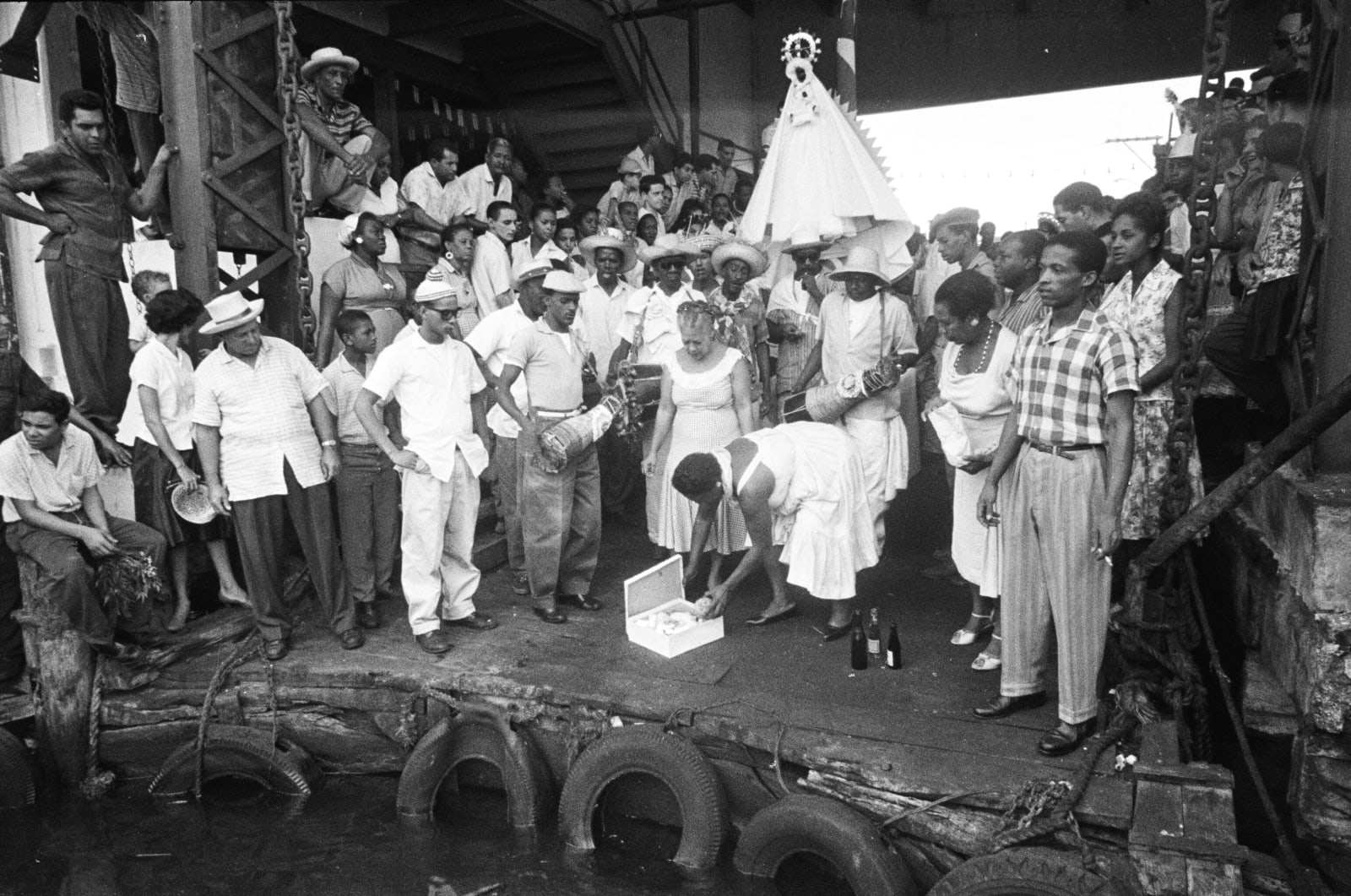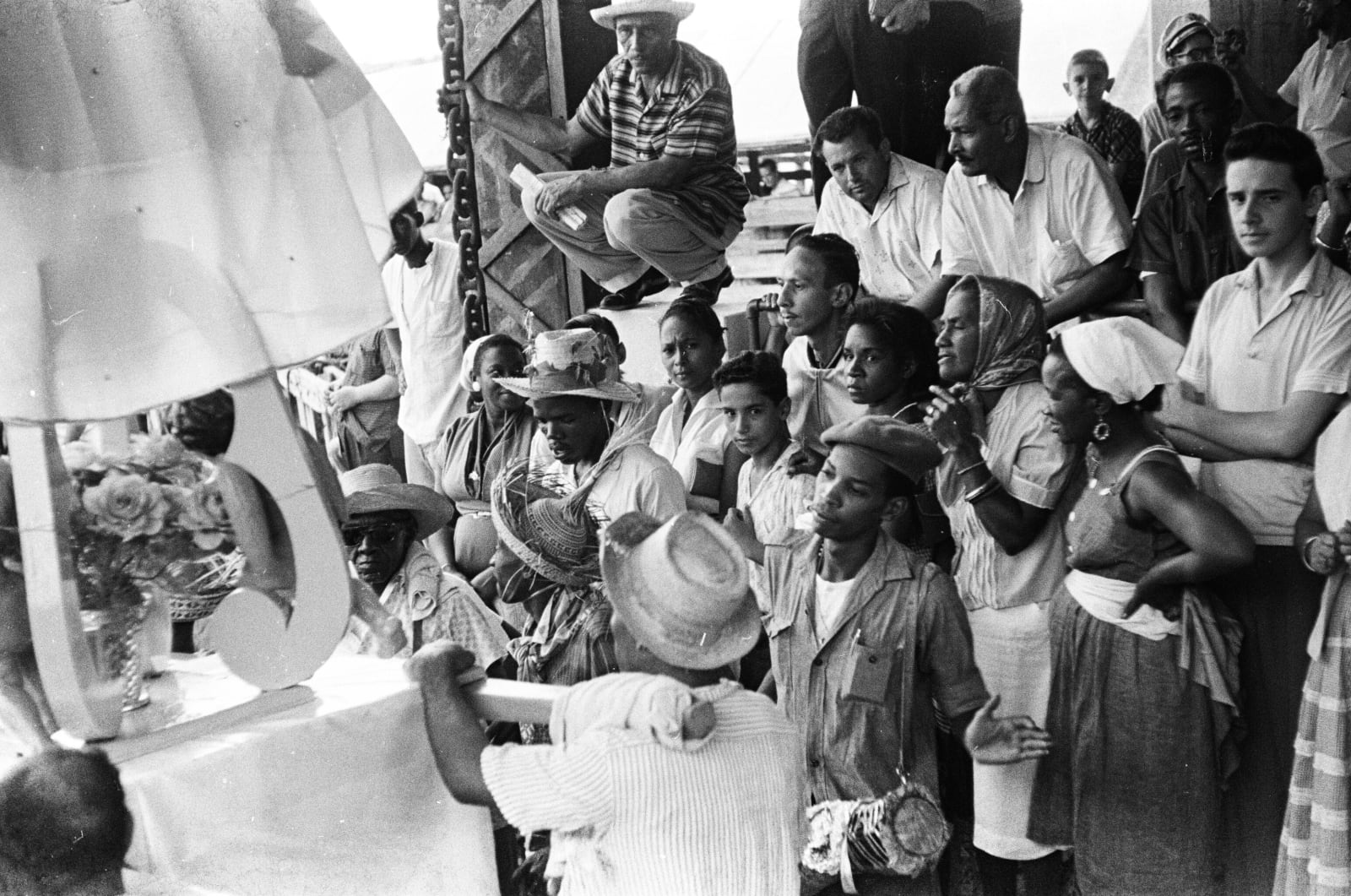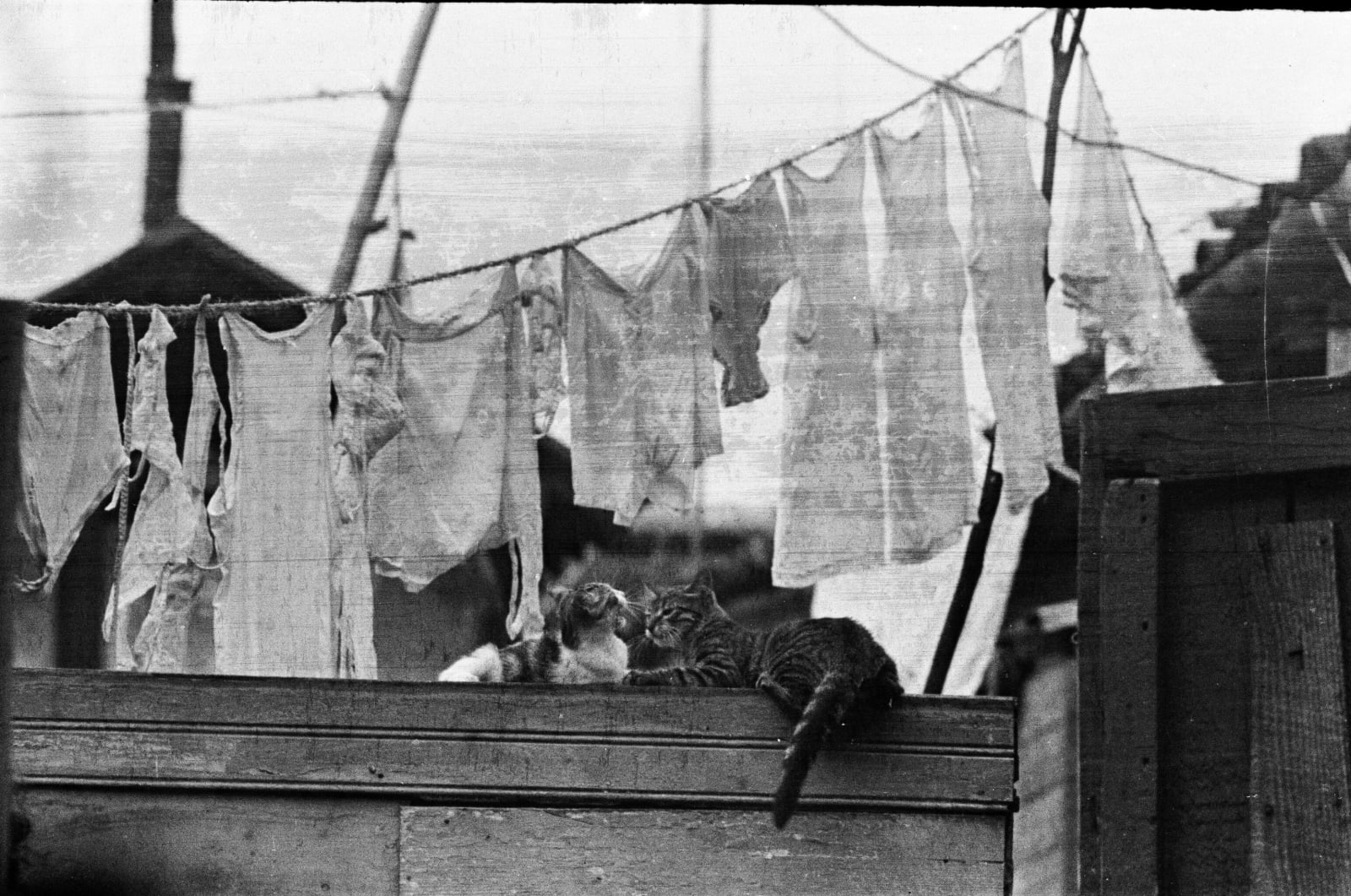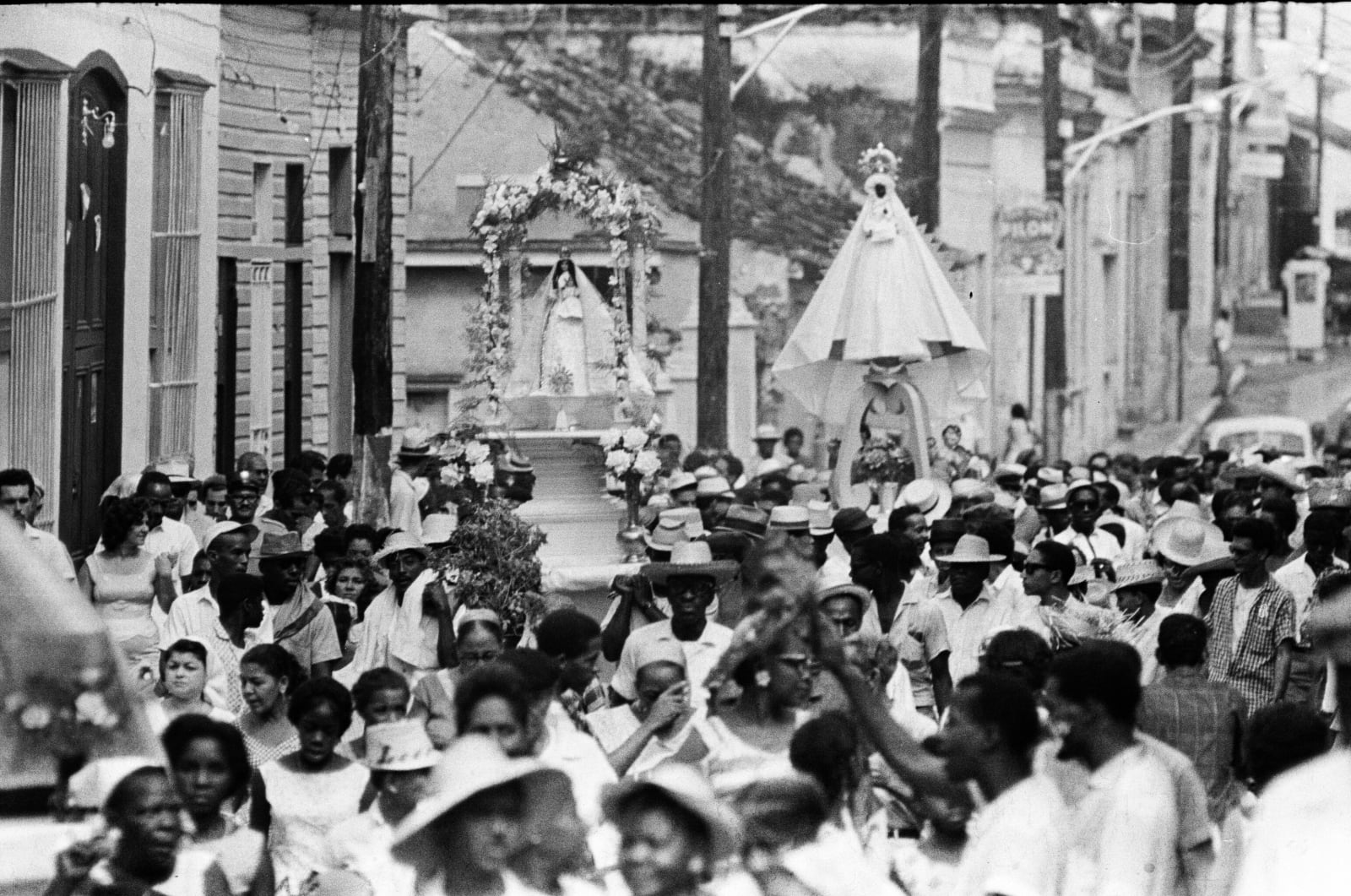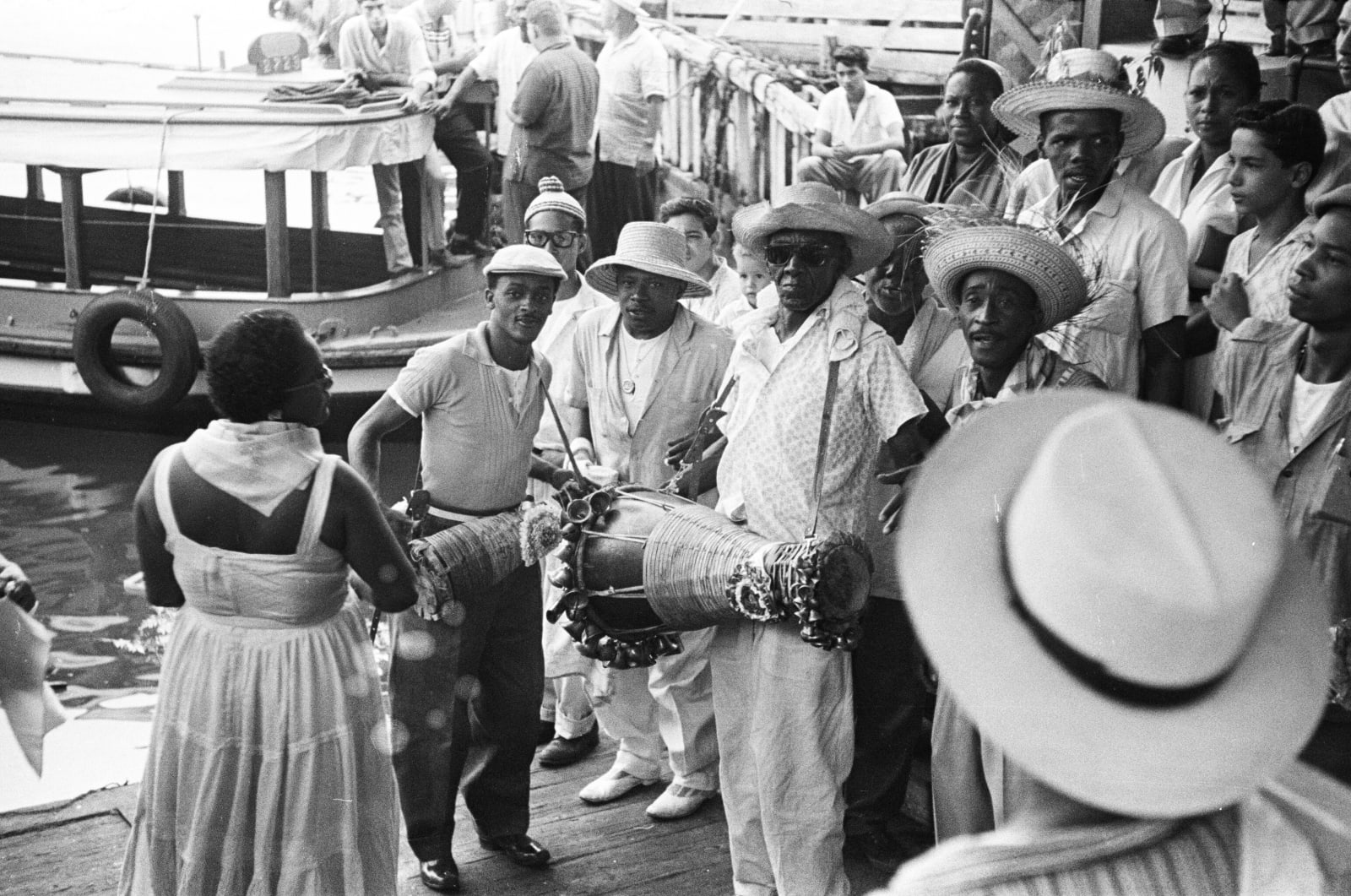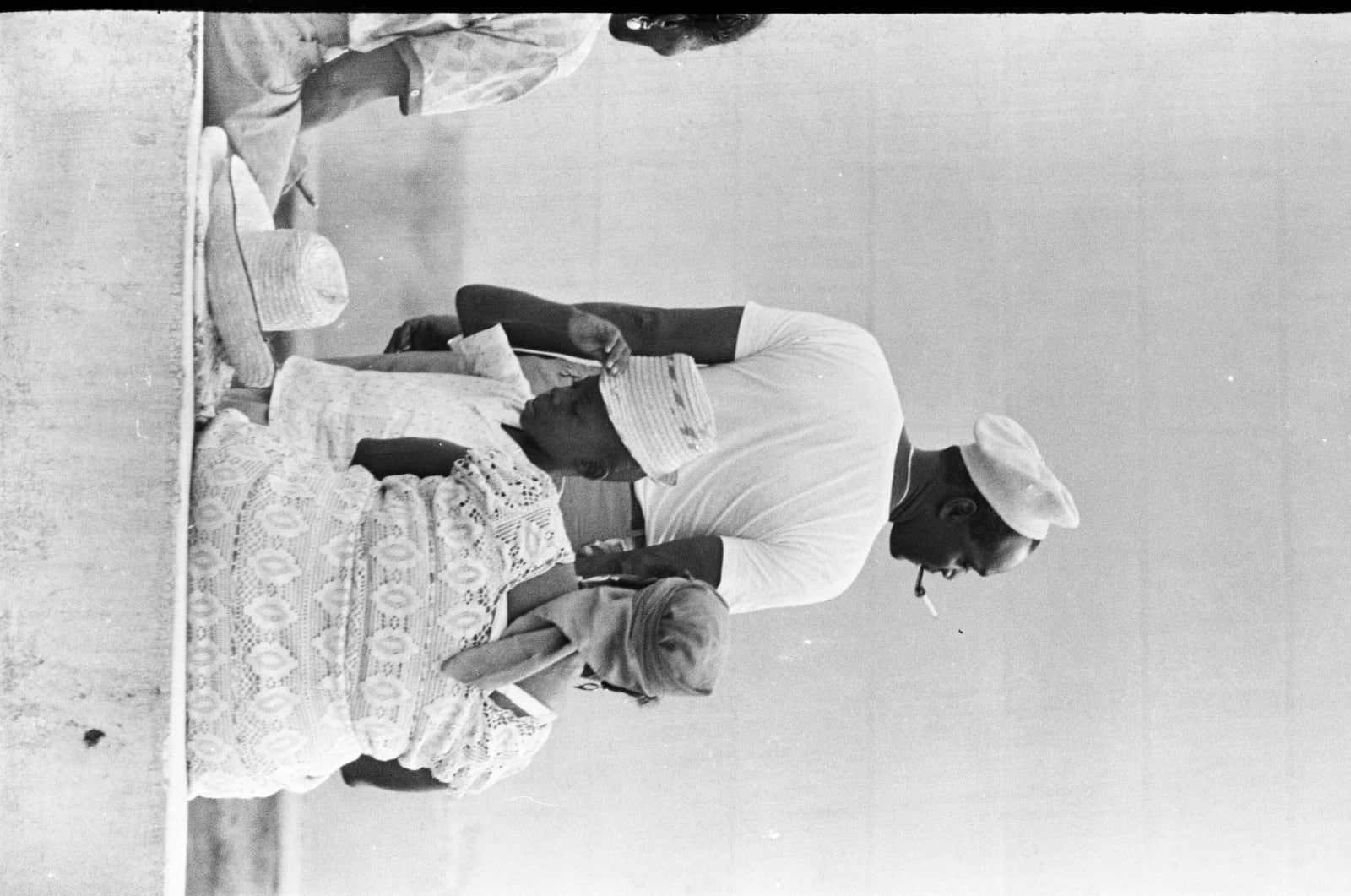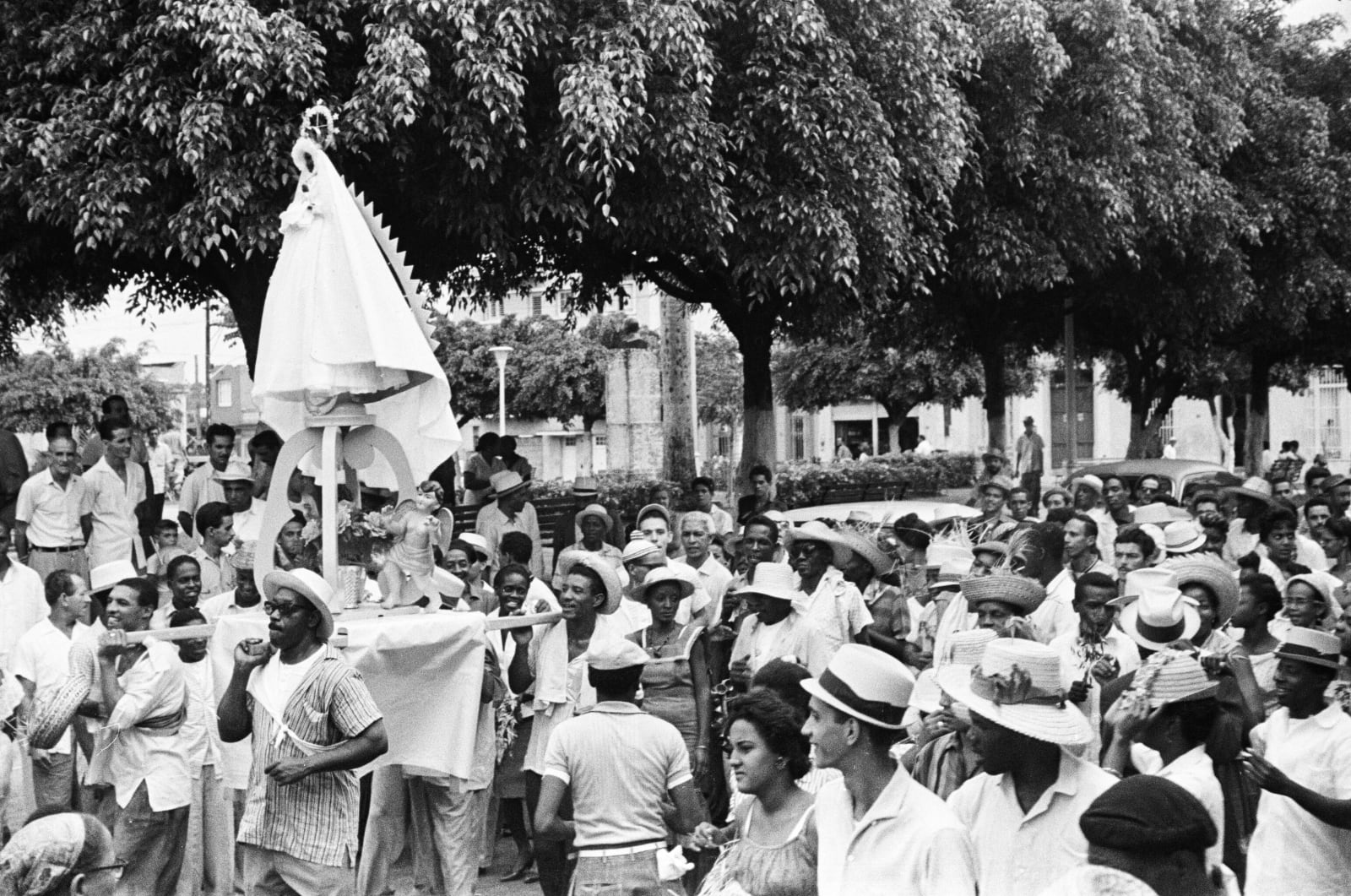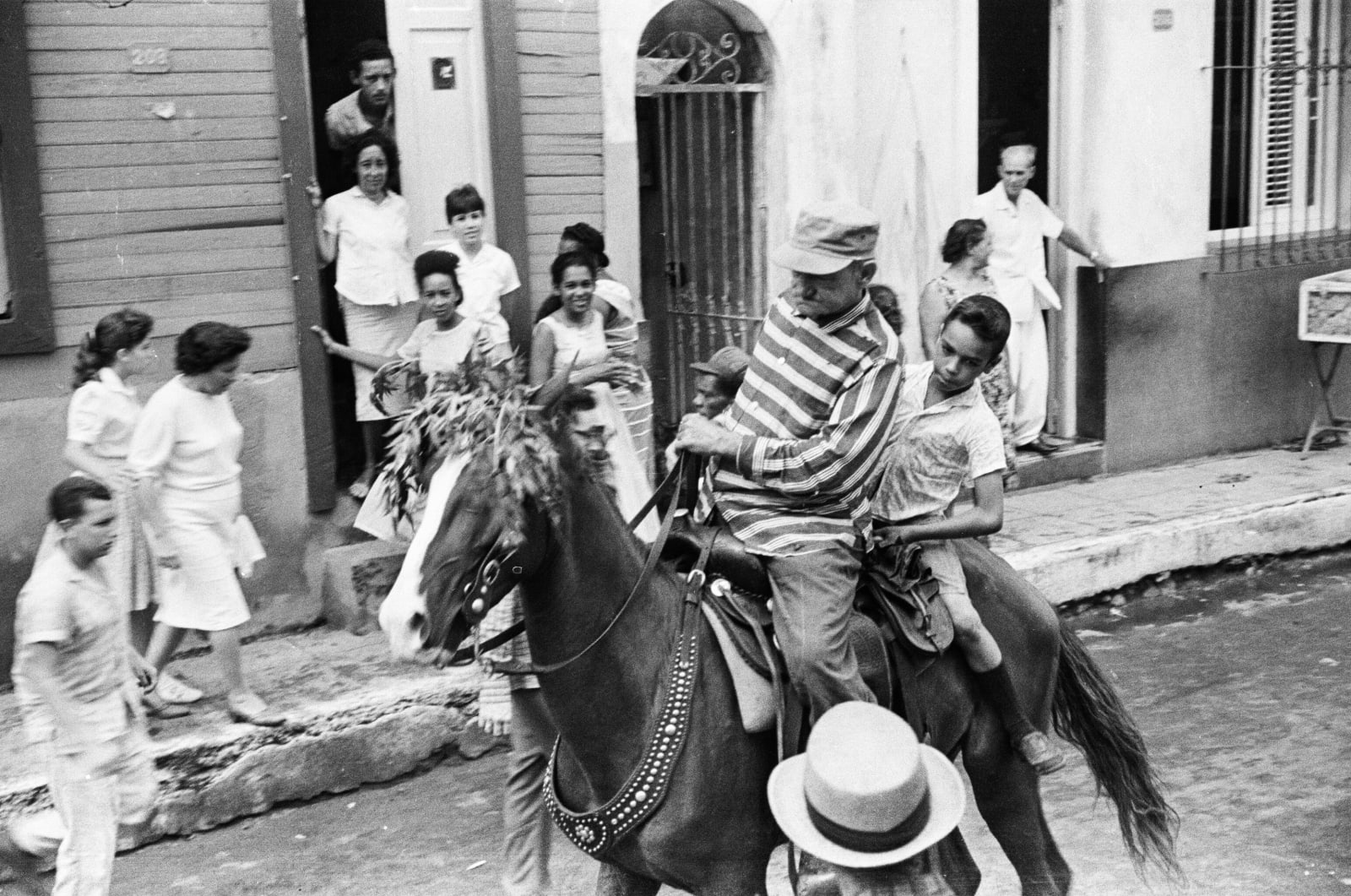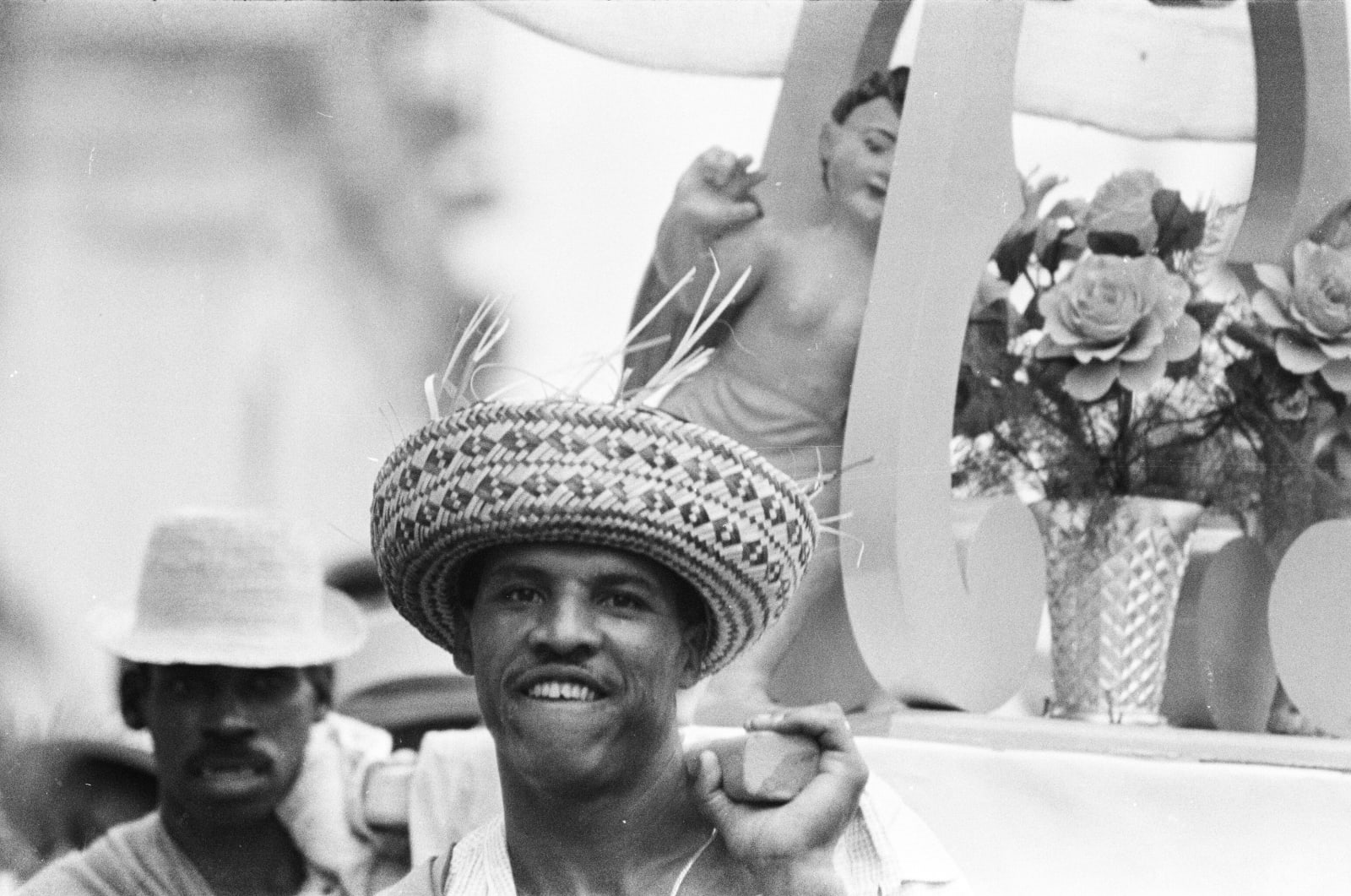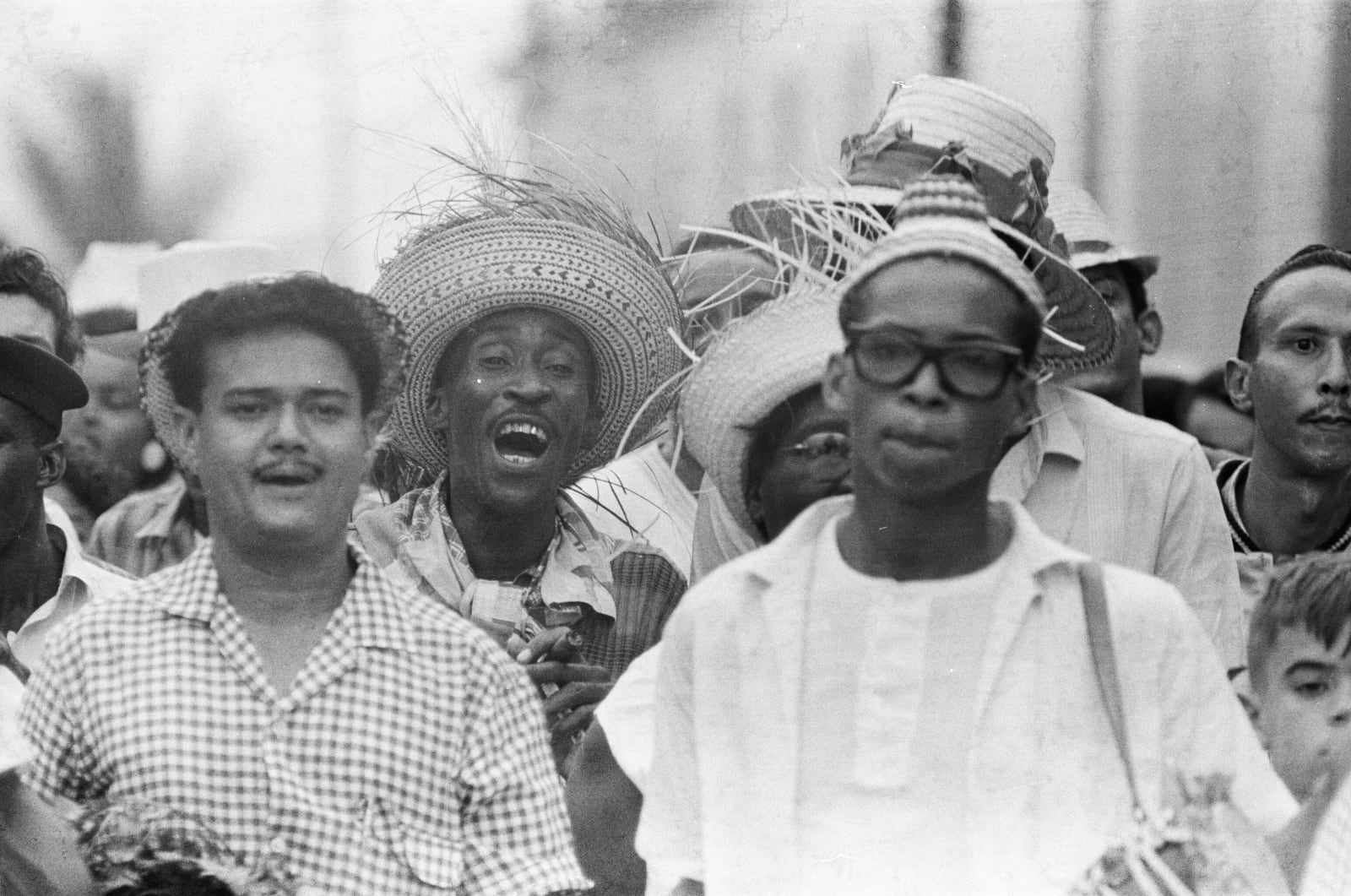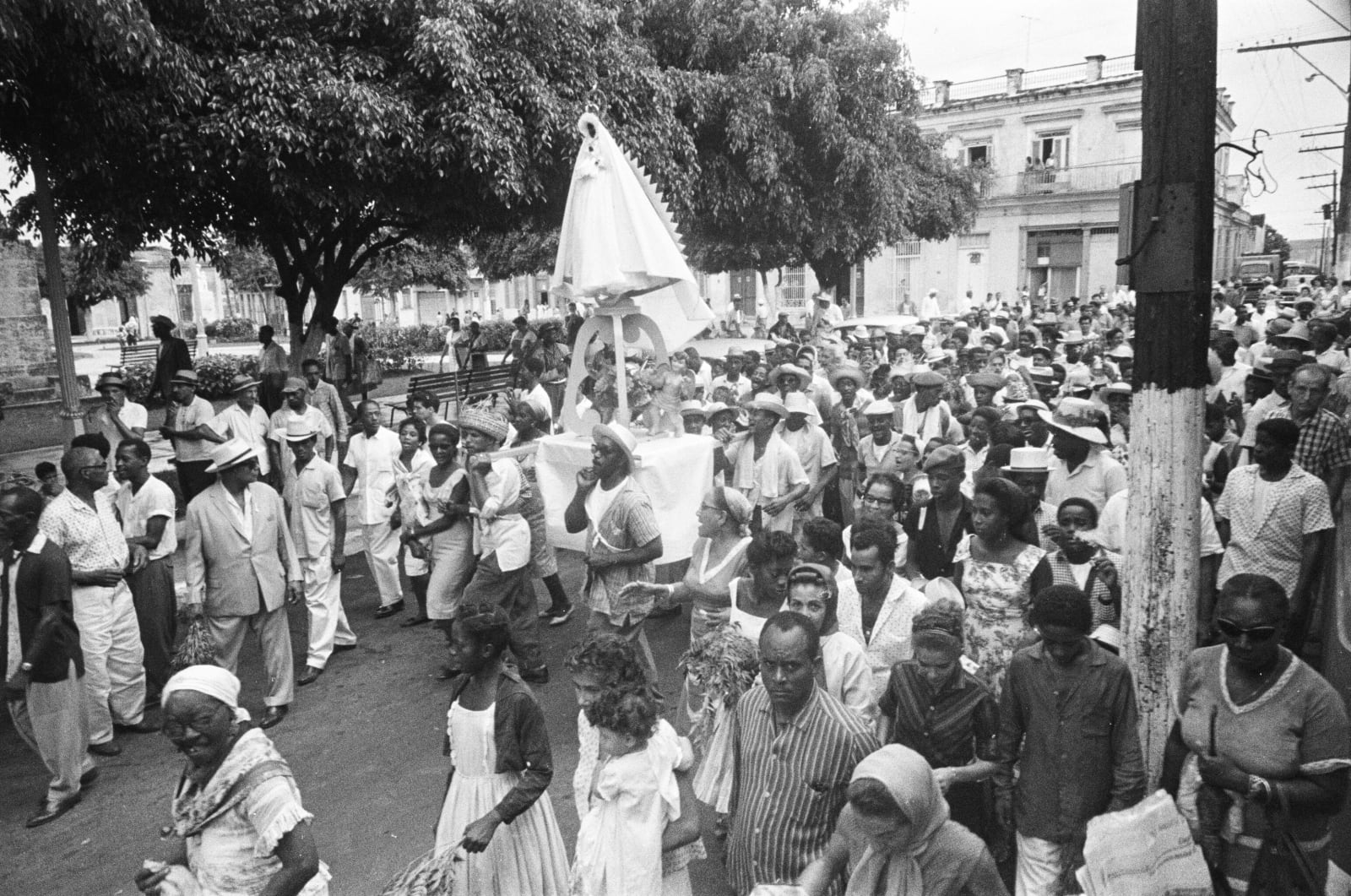In his series El Último Cabildo de Yemayá, 1961, a 20-year old Salas documented the final Cabildo, a religious progression honouring Yemara, an Orisha of the sea. Captured in Black and White film photography, the series is a unique artefact of its time and of its place, the last documentation of the last passage of a religious process lost to the tempest of political favour.
After the Cuban revolution, religious practices were heavily suppressed by the Revolutionary Government, a suppression that would end in an effective ban of public religion across the country. For fear of persecution, religious practitioners thus went underground and the result was a loss of lived memory of these important religious rites. Fortunately, we have docuemntation in this series of the final procession of the Cabildo de Yemayá.
The pattern of loss, the loss of venacular tradtions present before revolution, was replicated large and small across the country again and again.
Organised by respected santeras Susana Cantero (Omí Toké) and Josefa Herrera (Eshu Bí), the progression featured sacred drumming, Yoruba chants, ritual offerings, music and the use of obi divination. We can see in the iconography, the blending of Catholic symbolism with that of Orisha’s the gods and symbology which traveled from Africa to Cuba. It demonstrates a type assimilation subversion that occurs across the African diaspora: the act of absorbing colonial ideas and using a symbolic sleight-of-hand to have them represent distinctly non-colonial values.
We invite you to take your time with these photographs, to explore the faces that reappear across the progression of the day, explore the faces, clothes, movements, and icons that populate these photographs. Lose yourself in a time lost to time. For more information, see our suplementary literature and essays.
